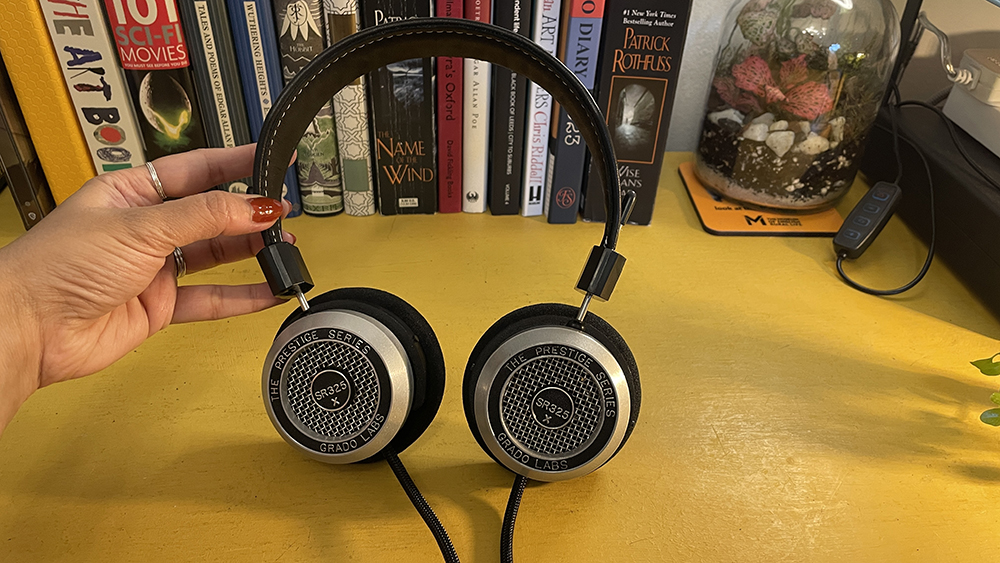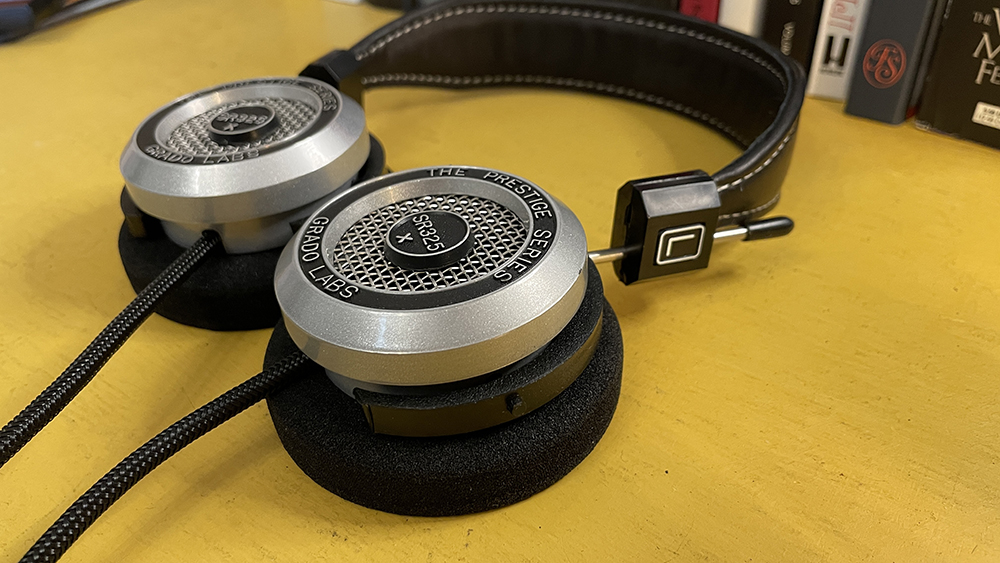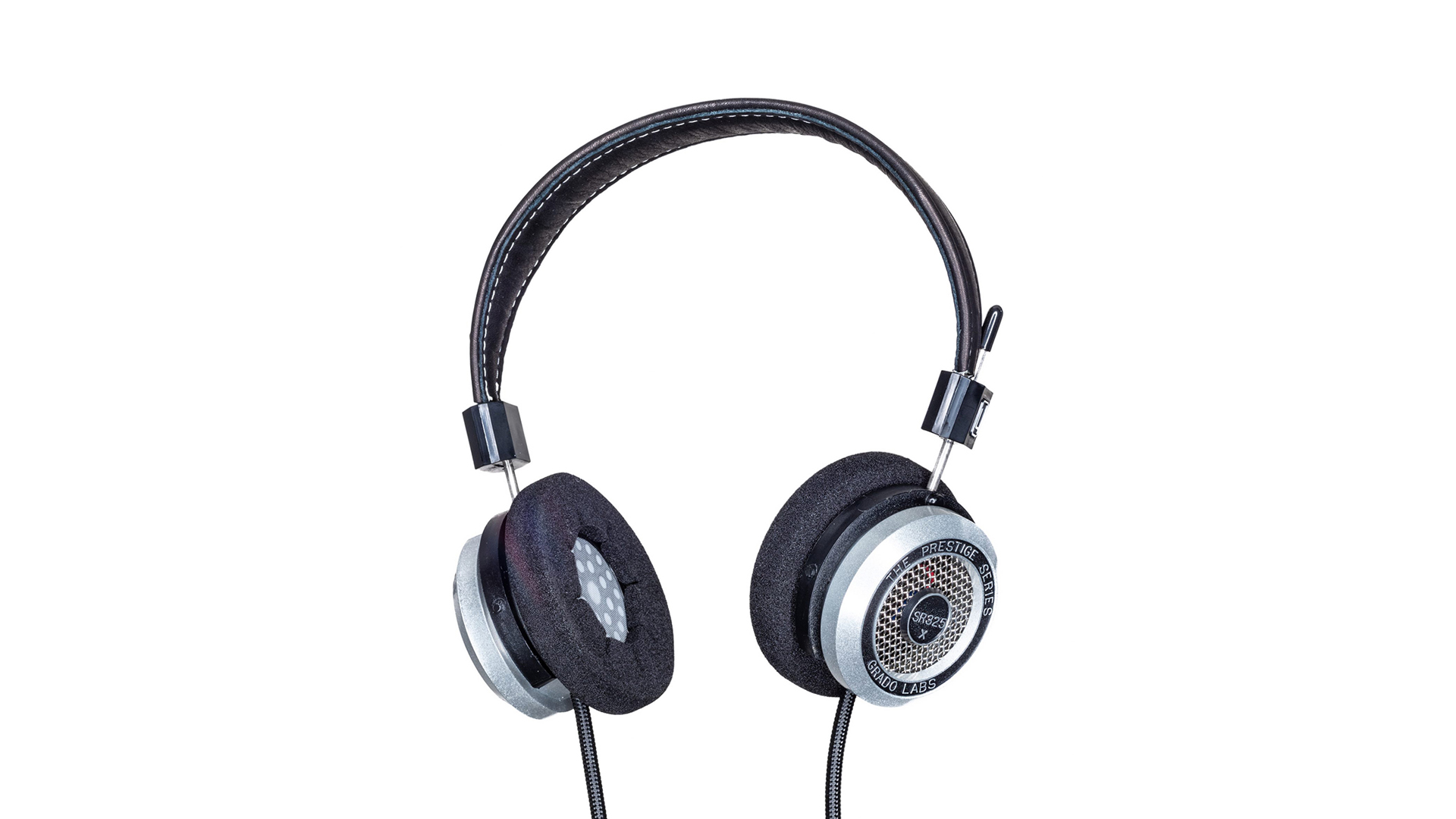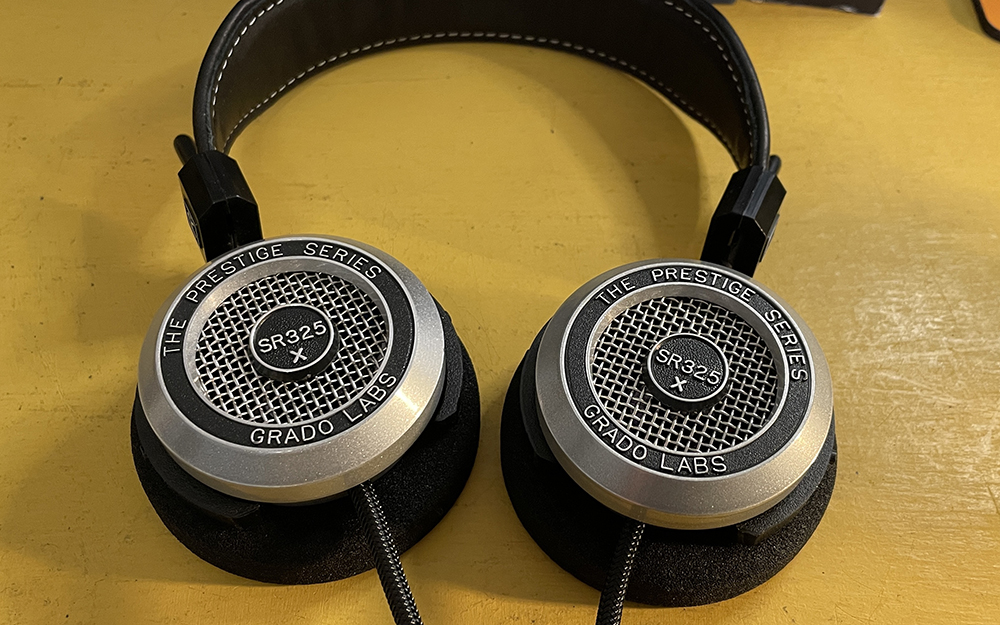
Grado's distinctive range of wired headphones has long impressed us, and the Prestige range of budget-to-mid-price headphones has been at the core of Grado’s output since it was first introduced over three decades ago. While the series has developed over the years, Grado has always done so in small evolutionary steps. The story remains the same for this current ‘x’ generation, with the Grado SR325x on-ear open-backs a current and multiple What Hi-Fi? Award-winner in its field.
Build

Put the range-topping SR325x on-ear headphones next to its immediate predecessor (the What Hi-Fi? Award-winning SR325e – last winning an Award in 2020 before conceding to its replacement), and there’s little to separate them, apart from the new flatter foam earpads, updated cable and lighter coloured stitching on the firmly padded headband.

Transducer type Dynamic
Operating principle Open air
Frequency response 18Hz – 24kHz
Impedance 38 ohms
As is usual with Grado, most of the important work goes unseen. The 44mm drive unit has been changed considerably with a revised motor system, new diaphragm and upgraded coil. The aim is to improve efficiency and reduce distortion.
Similarly, that new 8-conductor cable uses ‘super’ annealed copper and is claimed to deliver a purer sound than that used before. It is now terminated by a 3.5mm headphone jack, but a 6.3mm adaptor is also provided.
Elsewhere, the SR325x on-ears remain the same design as before. They still remind us of the headphones air traffic control operators used in the 1940s. It’s a rather basic aesthetic that divides opinion among the What Hi-Fi? team.
The open-backed design means that they leak sound, but also provide almost nothing in the way of noise isolation from the environment. If you’re listening in a room with others, be prepared for your listening experience to be disturbed if they make any noise at all.
Grado’s Prestige series models have rarely felt like luxury headphones, and nothing has changed with this new generation. It’s an impression that starts with the packaging, which is still a basic cardboard box, and extends to the rather coarse foam used for the also new thinner earpads. If you’re looking for a premium feel you’re not going to find it here.
But you will find ruggedness and durability. We have used numerous pairs of Grado Prestige headphones over the years and they have needed little more than semi-regular earpad changes to keep going. Those foam earpads don’t last forever, but they are easily changed and don’t cost much to replace. The basic structure of the headphones and materials chosen are impressively robust and deal with day-to-day use superbly.
Comfort

Comfort is another area where these headphones divide opinions. At 340g, they’re not heavy, and there’s enough in the way of adjustment to cope with a wide variety of heads. But not everyone will get along with the new foam earpads, or the on-ear design – which is becoming increasingly rare in a world dominated by noise-cancelling wireless cans. These are firmly wired headphones aimed at home use, so we would warn against taking these out on the move.
Even as long-term Grado users, it takes us a while to get used to them due to their thinness and overall shape, but it’s worth persisting. A few days of acclimatisation makes us more kindly disposed towards them, particularly as the new earpads cause a subtle shift to the balance of the SR325x’s sound, making them a less demanding listen.
We compare the two types of earpads and it becomes clear that the headphones sound smoother and more authoritative in the bass with the new design. We try the new pads on previous generations of the SR325s (we have both the older ‘e’ and even older ‘i’ versions on hand) and in each case the sonic changes are consistent; a more direct presentation with greater top-end refinement and improved low-end solidity.
Sound

But the better sound of the SR325x is down to more than just the earpads – the benefits of those changes to the drive unit are obvious too. We listen to Massive Attack’s Heligoland and the SR325x sound notably cleaner and clearer than before.
These wired headphones have always been detailed and articulate performers, and that hasn’t changed, but the ‘x’ generation sounds that bit more precise and insightful. We can follow low-level instrumental strands with more ease, especially in the album’s more densely produced tracks. Rhythms are still delivered with enthusiasm and plenty of punch.
The SR325x’s open-backed design means that they’re wonderfully expressive dynamically, and lows are agile and tuneful, but there’s still not the outright weight and low-end punch of closed headphone designs. The SR325x can sound a little bass-light in comparison to such products, though we’re happy to make that sacrifice given the many benefits of the open-design approach.
We switch to Lana Del Rey’s Chemtrails Over The Country Club set and love the Grados’ ability to convey the texture and attitude in her voice. The excellent insight generates a lovely sense of atmosphere and we find ourselves getting lost in the music rather than focusing on analysing the SR325x’s performance. The newfound sense of refinement makes it easier to relax when listening too.

Of course, you have to provide the Grados with a quality signal. If that 3.5mm connection tempts you into thinking that a phone, laptop or budget music player are going to be ideal partners, you’d be wrong. These headphones will still sound acceptable with such sources, but we’d be looking at an outboard DAC of the quality of Chord’s Mojo or Mojo 2 for the laptop and phone, and at least Astell & Kern’s A&norma SR35 hi-res music player, if we want to hear the scale of the SR325x’s talents.
We listen to a wide range of music during our time with these Grados and they always please, if fed with a good enough signal. Regardless of whether it's the soul of Gladys Knight, the hard-edged tunes of Nirvana or the hip-hop of Eminem, these headphones sound right at home.
Verdict

These Grados once again prove that evolution is arguably a more reliable way of making things better than a headline-grabbing design revolution.
While there is plenty of new competition at this £200-£400 price level, we find that nothing quite beats the Grado for communicating all elements of music faithfully and with such enthusiasm. The retro design won't be for everyone, but this three-time Award-winner remains a firm recommendation for anyone looking for a solid pair of wired headphones at this level.
Review published: 2021. Review updated: November 2024.
SCORES
- Sound 5
- Comfort 4
- Build 4
MORE:
Read our guide to the best wired headphones
Read our Austrian Audio Hi-X55 review
Read our Beyerdynamic T1 (3rd Generation) review
Closed-back vs open-back headphones: which design is better for you?







